
TARGET 150401
The Most Densly Populated
Place on Earth
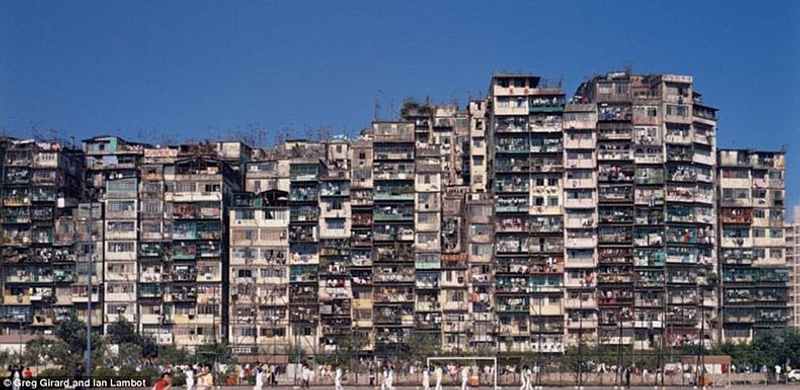
The Walled City of Kowloon was only about four times the size
of the rugby field
in the foreground, but was home to over 33,000 residents
Kowloon Walled City was a Chinese settlement in Kowloon,
Hong Kong. It was comprised of 350 interconnected
high-rise buildings where 33,000 residents
lived within a plot measuring just 210 meter (689 feet)
by 120 meter (394 feet) That was about four times the
size of a regulation Rugby field or roughly six times
the size of a American football field. It was so densly
populated and so crammed together that there was virtually
no way it could be governed, so it was run mainly by
the Chinese tongs (gangs). Surprisingly, though, the people
and the gangs tended to police themselves, and formed
a community where people, for the most part, lived
their everyday lives in peace.
NOTE: This may seem like a very negative and distasteful
remote viewing target, but to me, it is the story of
immigrants and refugees who found a way to survive and
live together under the worst of conditions. As such,
I chose it as a target that tells a part of the story
of thousands of very brave and heroic people. Besides,
if you are going to learn to view the world, you will
find out that it may not be all love and light, but that the
unquinchable spirit of Man can be found in even the most
dire and seemingly hopeless of conditions. And that is
the lesson I would ask you to take away from this viewing
target - Lyn
Originally a Chinese military fort, the Walled City
became an enclave after the New Territories were leased
to Britain in 1898. Its population increased dramatically
following the Japanese occupation of Hong Kong during
World War II and reached a peak of 33,000 residents in
1987. That was the last real count of its population that
was ever managed, but When it was demolished in 1993-94,
it was thought to be the home of over 50,000 people - the
most densely populated place on earth.
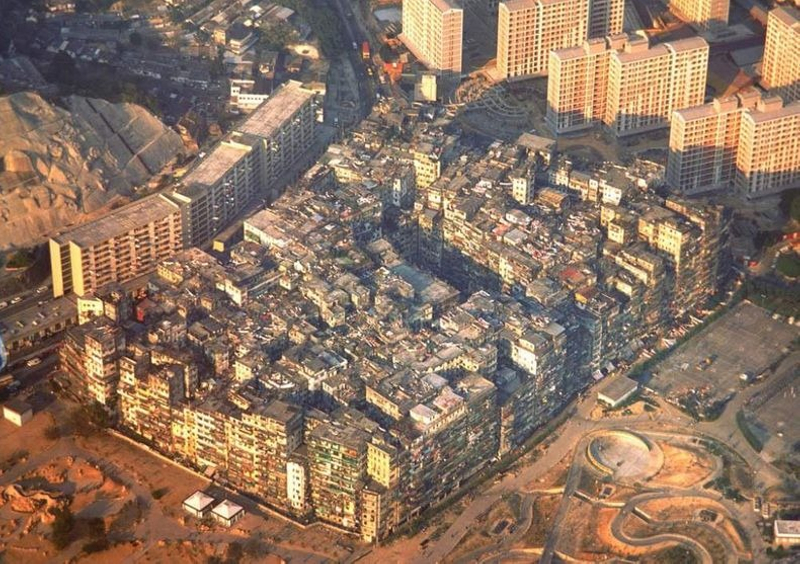
Home to 33,000 - 50,000 people
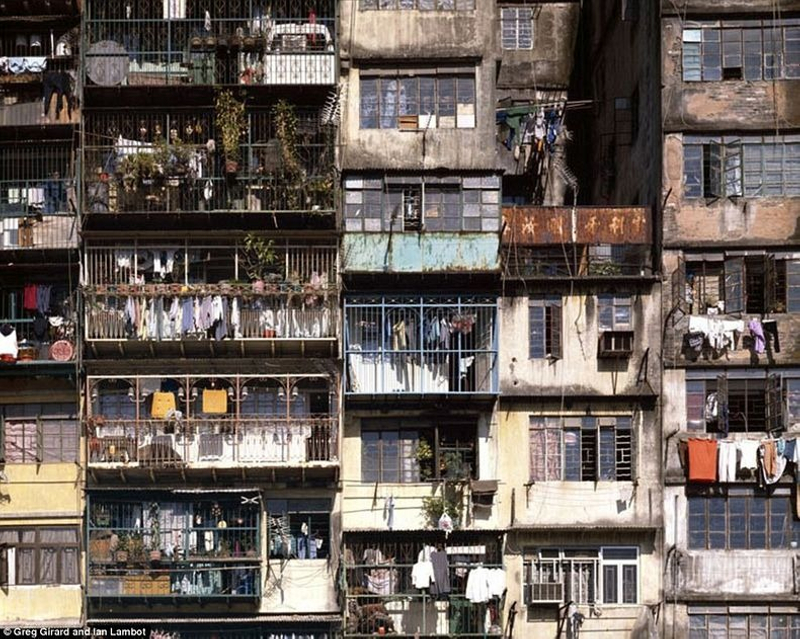
The construction was poor.
Note: When I visited there in the 1970s, I was
told that, since this place had virtually no
governmental or police control, it was like a country
unto itself. I was told jokingly that its national
flag was the clothes drying on the balcony railings. - Lyn
The roughly 350 buildings that stood inside the Walled
City were built with poor foundations and actually held
each other up. For many, there was no electricity,
water, or plumbing of any type. There were also no elevators,
and those who lived in the floors above had only dark
hallways and stairwells as their only way to and
from their homes. Because the apartments
were so small, space was maximized with caged
balconies and rooftop additions.
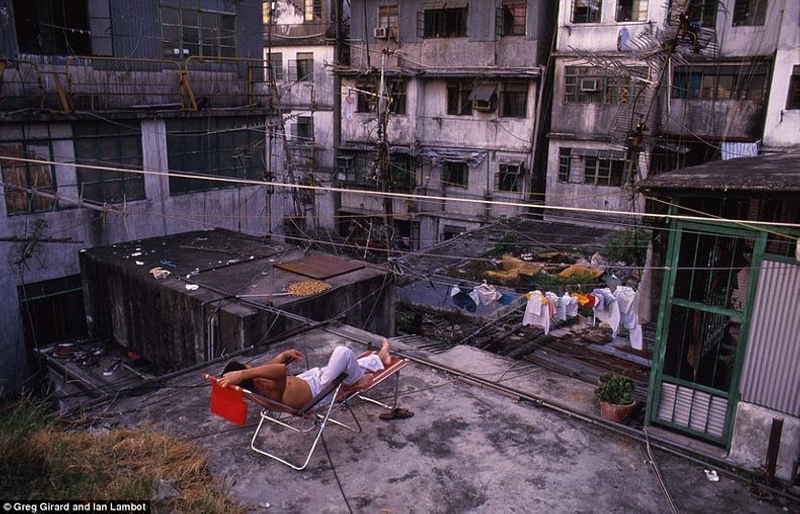
A rooftop addition
Roofs in the City were full of television antennas,
clotheslines, water tanks, and garbage. Since the
buildings were built touching each other, residents
who lived on the higher floors could simply go to
other buildings via the rooftops, without going
down to the dangerous streets.
Sometimes, the roofs were also a refuge for the people
who lived below. They were the childrens' playgrounds,
and even had homes that people had built, themselves,
out of things found in garbage.
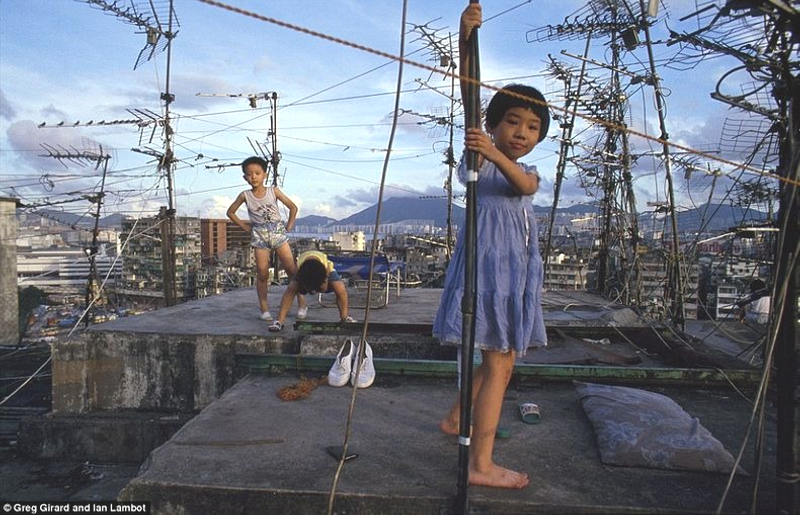
"Wall City playground"
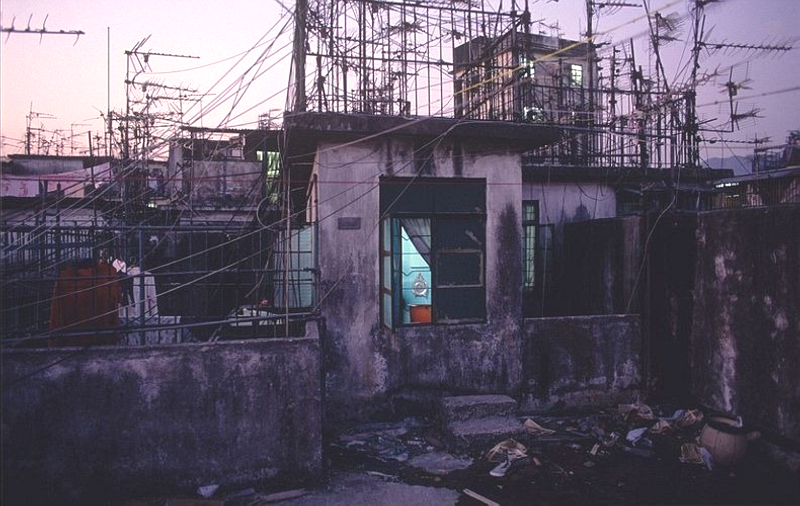
A house in the forest of "Wall City trees"
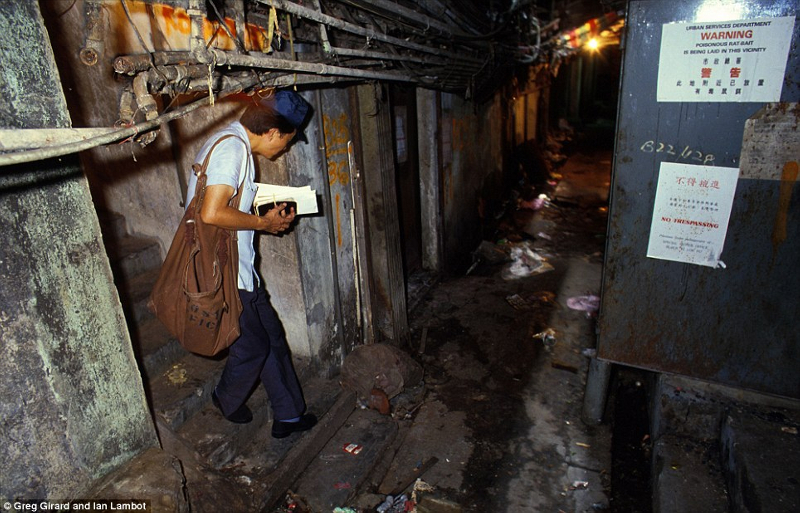
The postman delivers mail to an apartment on an
upper floor.
Mir Lui was assigned to work in the city as a postman
in 1976 and had no choice but to go. He was one of the
few non-residents who knew the ins and outs of the city.
He wore a hat to both identify him as the mailman and to
protect him from the constant dripping of rainwater - and other
things - as he went through the buildings.
THE PEOPLE WHO LIVED HERE
Robert Ludlum, in his book, "The Bourne Supremacy"
describes the city:
"The Walled City of Kowloon has no
visible wall around it, but it (the wall)
is as clearly defined as if there were
one made of hard, high steel."
Leung Ping Kwan wrote in his book "The
City of Darkness":
"Here, prostitutes installed themselves on
one side of the street, while a priest preached
and handed out powdered milk to the poor on the
other; social workers gave guidance, while drug
addicts squatted under the stairs getting high;
what were children's games centres by day became
strip show venues by night. It was a very complex
place, difficult to generalise about, a place
that seemed frightening but where most people
continued to lead normal lives. (In other words,)
a place just like the rest of Hong Kong."
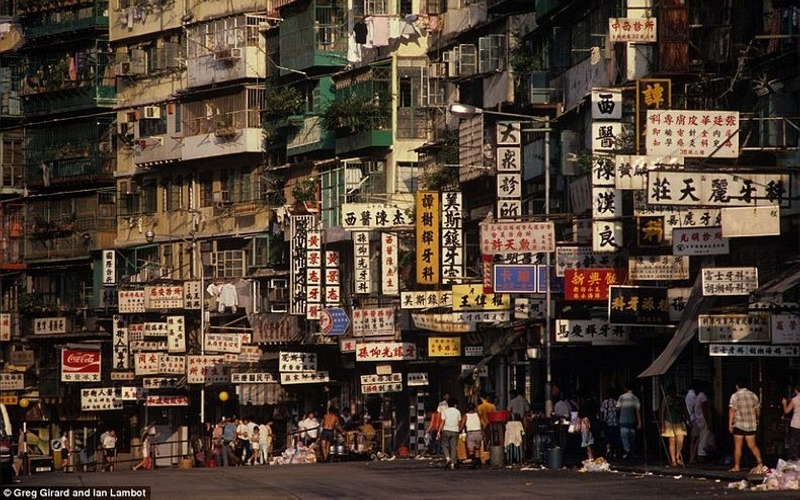
The lowest apartments along the streets were not only
used as living space, but also
as stores by their enterprising residents.
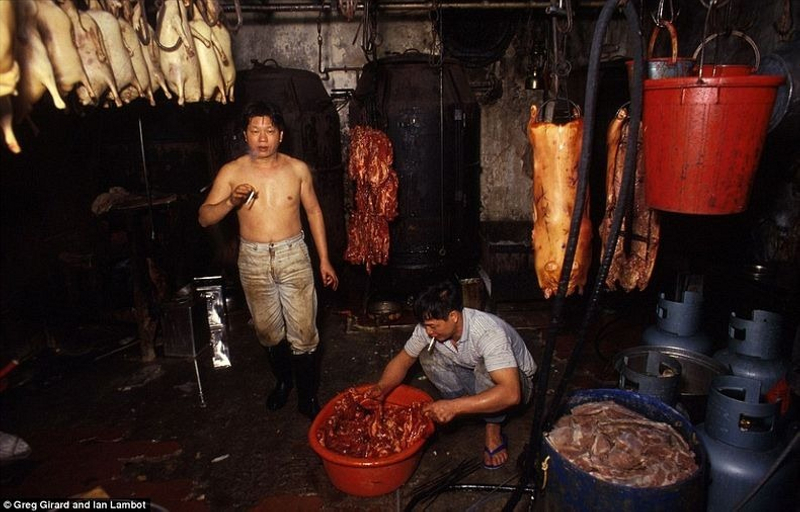
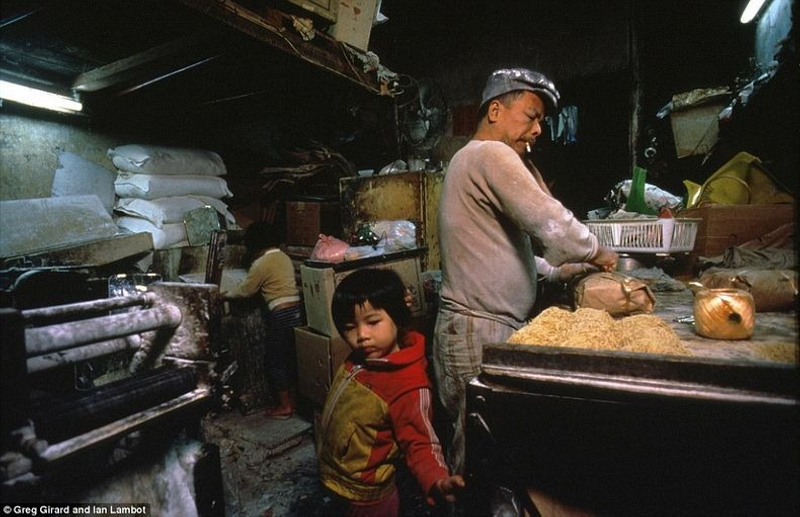
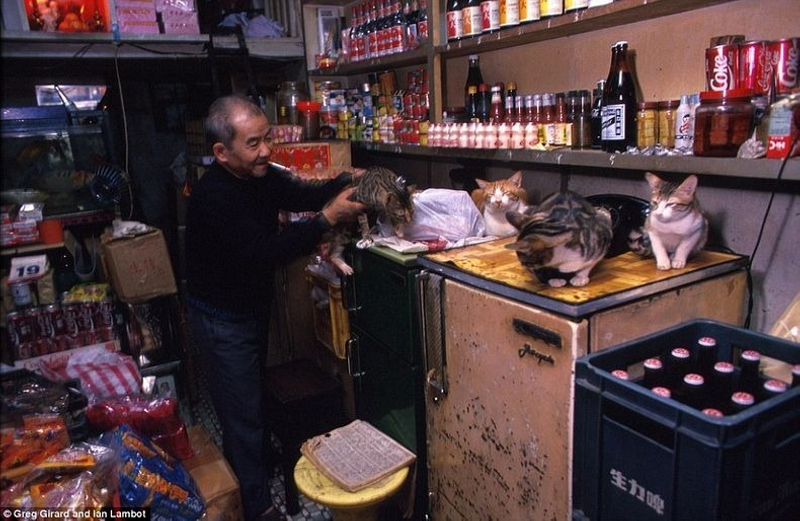
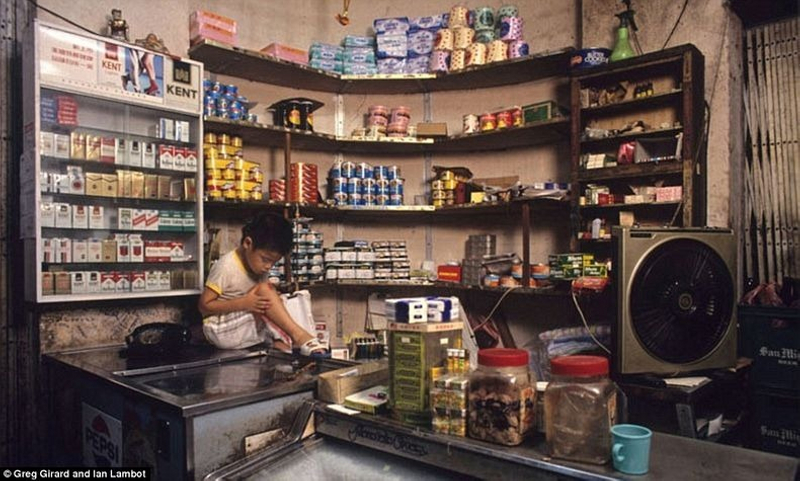
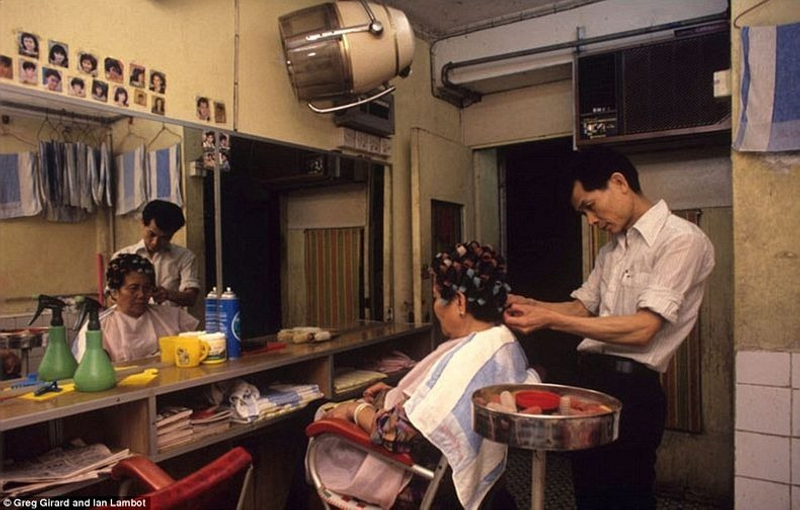
Over time, both the British and the Chinese
governments found the City to be increasingly
intolerable, despite the low reported crime
rate. The quality of life and sanitary conditions
were far behind the rest of Hong Kong and
eventually plans were made to demolish the
buildings. The government spent $2.7billion
Hong Kong dollars in compensation and evacuations
started in 1991. Those who refused were forcibly
evicted. After four months of planning,
demolition of the Walled City began on 1993
and concluded in 1994.
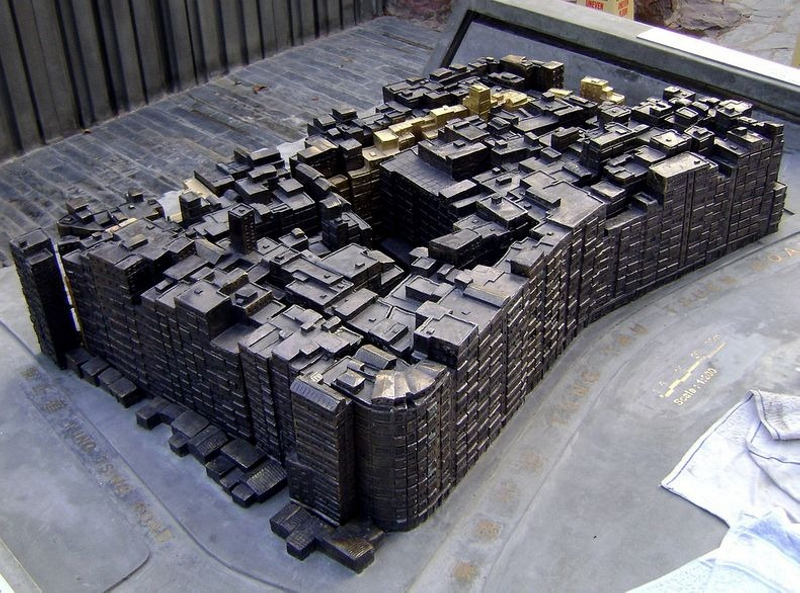
As it is, now.
The area where the Walled City once stood is
now Kowloon Walled City Park, a magnificent
park modelled on Jiangnan gardens of the early
Qing Dynasty comprising an area of 31,000 square
meters. The park's paths and pavilions are
named after streets and buildings in the Walled
City. There are a few artifacts, such as five
inscribed stones and three old wells, including
a bronze model of the Walled City on display
in the park.
FEEDBACK MAP
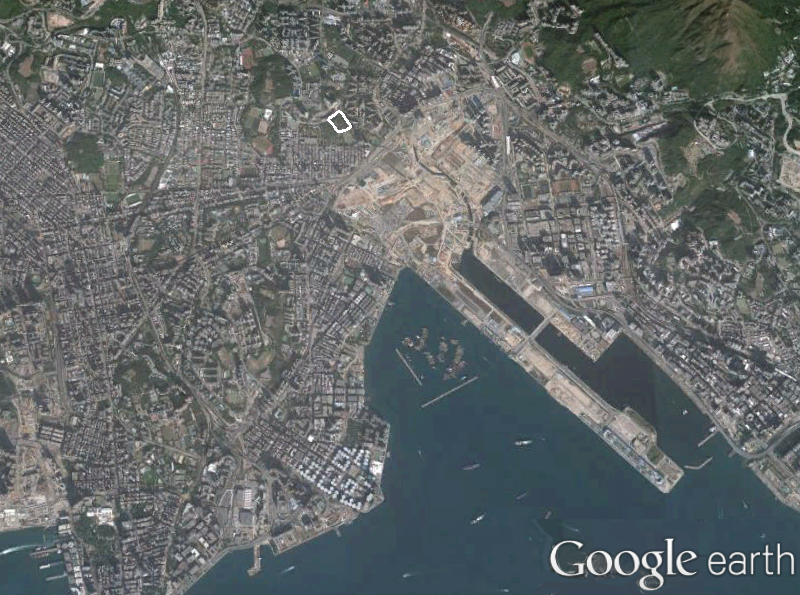
If you got impressions for which this feedback is
insufficient, more information,
pictures and videos can be found at the following
web sites:
Daily Mail website
Wikipedia
YouTube video - 1990
CNN on-line
Amusing Planet website















